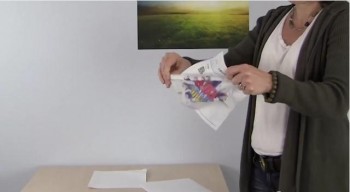Alex Garcia, owner of New Wave Sign Co., Miami, recently encountered one of those rush jobs so common to wide format graphics production, particularly in the vehicle graphics niche. Fortunately for Garcia, he had access to everything he needed at his fingertips.
“The customer had a show scheduled in California and needed a trailer wrap in 48 hours. Thankfully, I had a new roll of LexJet Simple Flo Wrap Vinyl and told them I could do a partial wrap instead of a full wrap,” recalls Garcia. “And, since LexJet is able to deliver products to us so quickly I can turn a rush job like this around without having to charge extra. I was low on ink and fortunately I was able to call the order in to LexJet and I got the ink right away.”
Garcia was able to print right away, sending the design he created to his Epson Stylus Pro GS6000 low-solvent printer, then laminating the Simple Flo Wrap Vinyl with Simple Flo Wrap Gloss UV Laminate (2.4 Mil).
“The truck was white so I incorporated that white space into the design. The printed area is a line that’s about 52 inches tall that grows into three vertical panels. I also printed out the logos that were placed in the white space and contour cut them on my Summa cutter,” explains Garcia.
Though this was not a “full wrap” by definition, meaning that the graphics were not applied around the edges of the back and front of the trailer, it sure looks like a full wrap. Garcia and his team began applying the printed panels at 2 a.m., working through the wee morning hours to complete it in time.
“We washed the truck really well so that the white areas would really shine and to make sure the installation went smoothly. However, it was a challenge because we were wrapping in really cold weather, which is unusual in South Florida, even this time of year. We used a propane torch and heated the whole side of the truck to make the application surface warmer and kept the material in a car with the heater on to keep the graphics at room temperature,” says Garcia. “We love the Simple Flo Wrap Vinyl because it images nicely, it’s economical and it applies easily.”

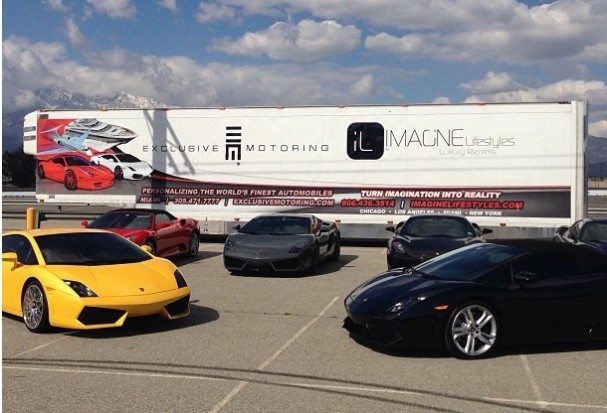
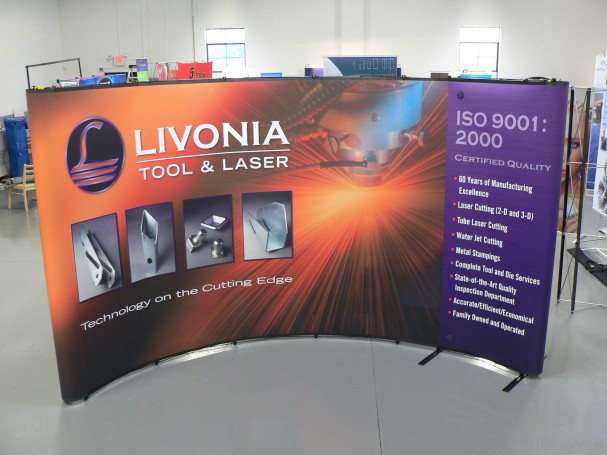
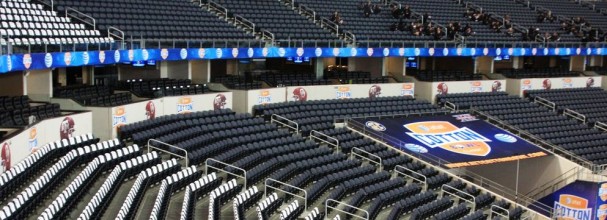
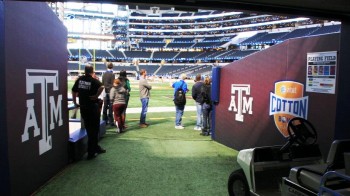
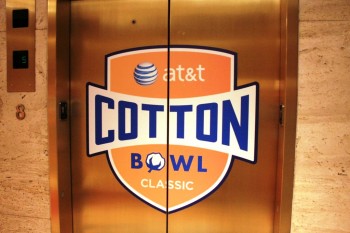 “We spent the first two years trying to find something that would adhere to the concrete walls. We tested a material during the summer before the initial opening of the stadium and that material seemed to work perfectly, but when we applied the vinyl a week before the game, in the winter months, the ambient temperature of the concrete had dropped considerably. The next day, we received a call from the Cotton Bowl folks telling us that a majority of our stickers had fallen off the walls. After all of our testing we were very surprised. We found a way to fix the signs that failed, but it made the project much more difficult and time-consuming,” says Jeff Teasley, owner of E.H. Teasley & Co. “In 2011 we were lucky to find PhotoTex. It’s a lighter weight material, and the adhesion properties are so much better than what we used for the prior game. To make sure we were on the right track before the game installation, we took it to a business near us with stucco-type walls. The graphic stayed up there for months in all of the outdoor elements. Seeing this, we felt confident that Photo Tex would do the job. Now we could sleep at night.”
“We spent the first two years trying to find something that would adhere to the concrete walls. We tested a material during the summer before the initial opening of the stadium and that material seemed to work perfectly, but when we applied the vinyl a week before the game, in the winter months, the ambient temperature of the concrete had dropped considerably. The next day, we received a call from the Cotton Bowl folks telling us that a majority of our stickers had fallen off the walls. After all of our testing we were very surprised. We found a way to fix the signs that failed, but it made the project much more difficult and time-consuming,” says Jeff Teasley, owner of E.H. Teasley & Co. “In 2011 we were lucky to find PhotoTex. It’s a lighter weight material, and the adhesion properties are so much better than what we used for the prior game. To make sure we were on the right track before the game installation, we took it to a business near us with stucco-type walls. The graphic stayed up there for months in all of the outdoor elements. Seeing this, we felt confident that Photo Tex would do the job. Now we could sleep at night.”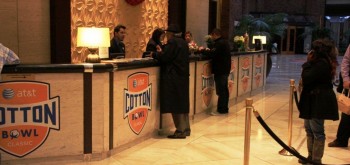 The graphics were printed on the company’s superwide solvent printers, which included a quantity of 352 four foot by four foot die-cut helmets and logos cut on a Zund cutter. These graphics lined the various levels of the stadium, the tunnels where the teams enter the field, as well as the lobbies of the host hotels. The hotel elevators were also branded with Photo Tex
The graphics were printed on the company’s superwide solvent printers, which included a quantity of 352 four foot by four foot die-cut helmets and logos cut on a Zund cutter. These graphics lined the various levels of the stadium, the tunnels where the teams enter the field, as well as the lobbies of the host hotels. The hotel elevators were also branded with Photo Tex 